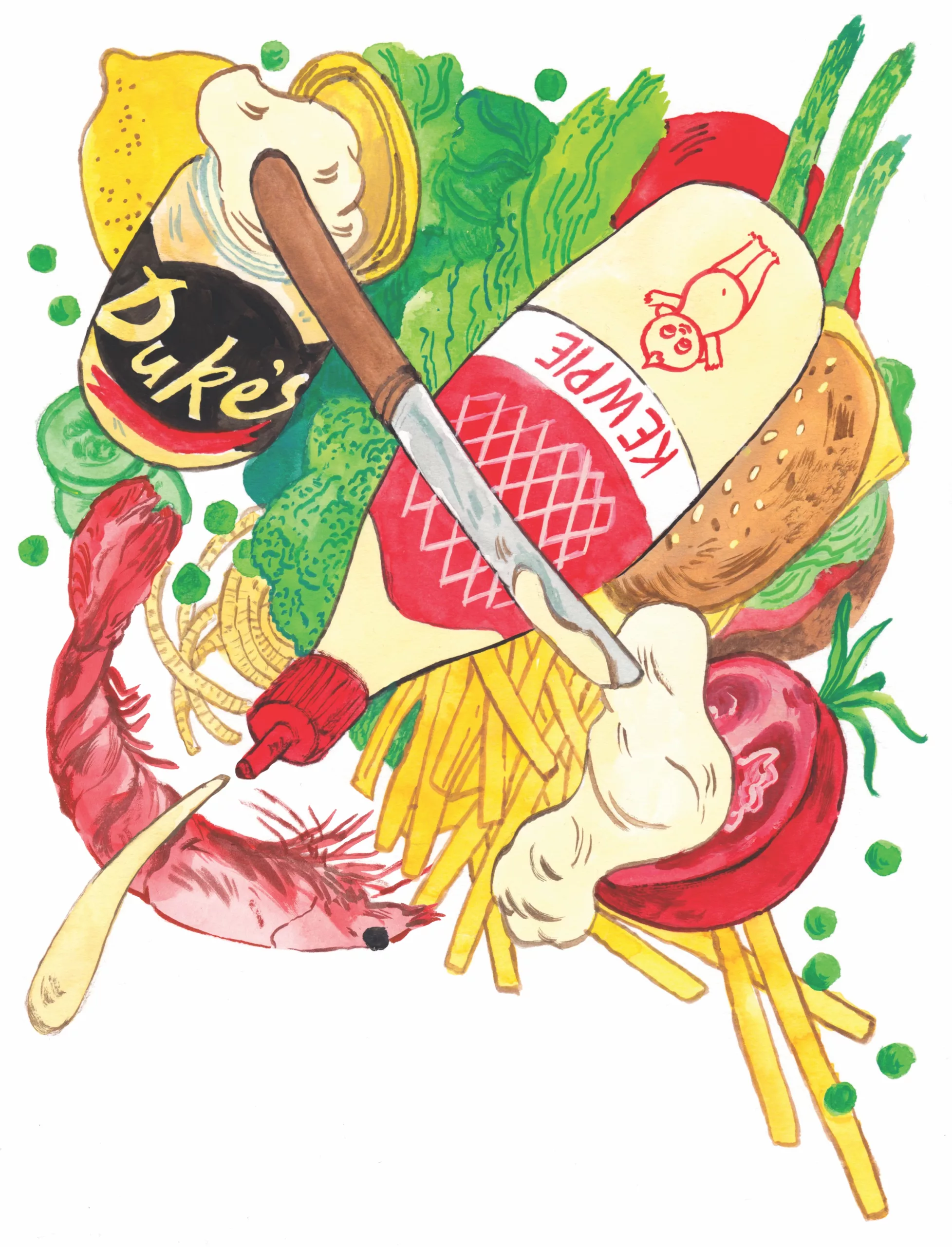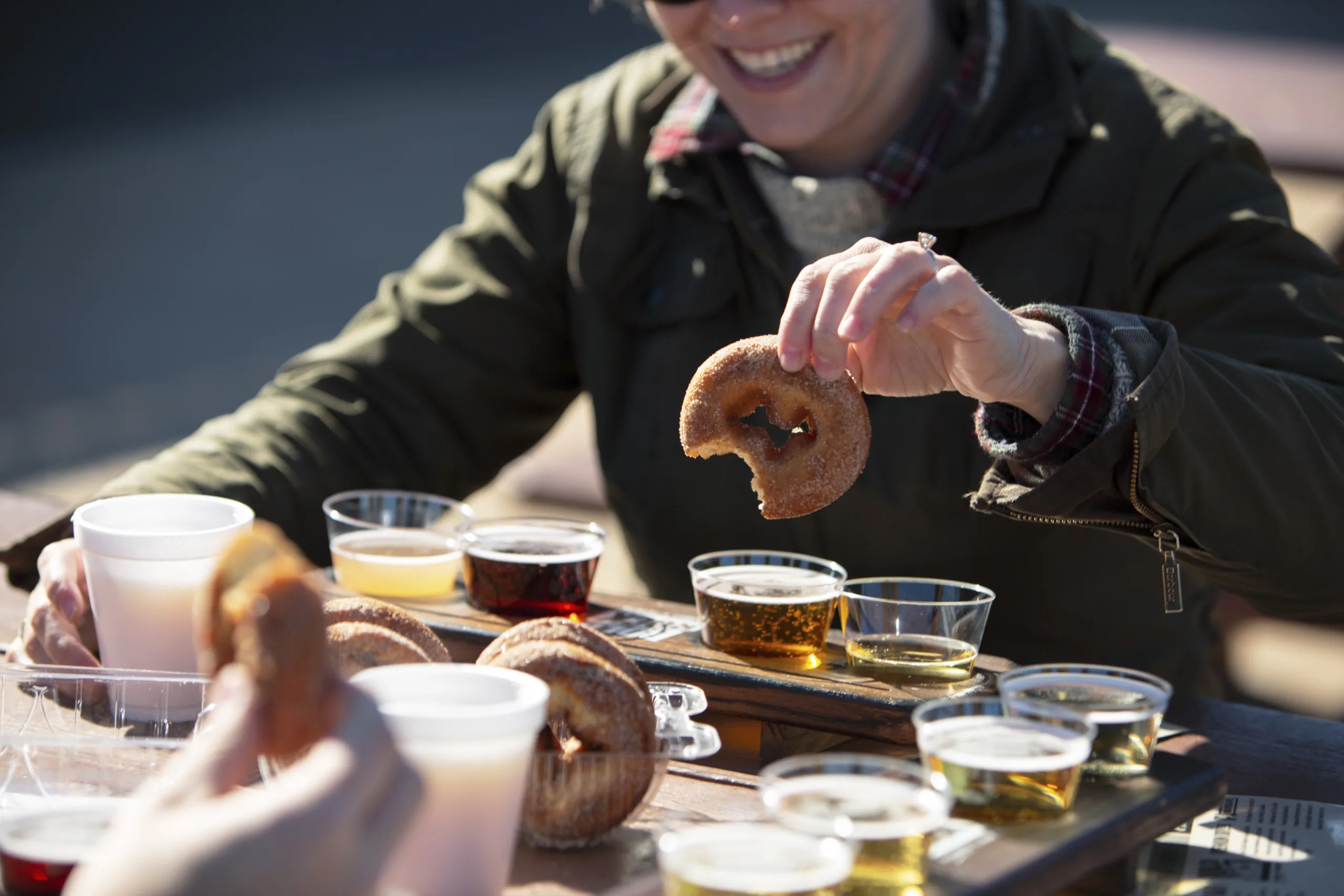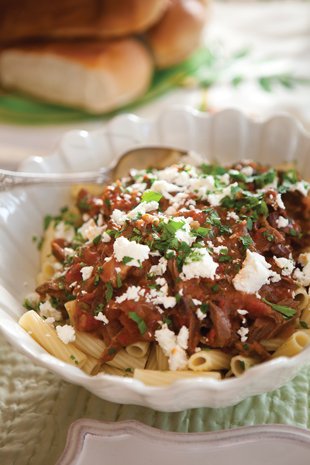Of all the condiments in the door of your fridge, there is perhaps none as polarizing as mayonnaise. The sandwich spread evokes either devoted love or vehement repulsion, depending on whom you ask. Even among mayo lovers, there’s the issue of which brand is best, a debate that hinges on regional fealty, culinary posturing, and of course, the most nebulous factor of all—taste.
I wasn’t the least bit surprised when the dozen Virginia chefs I spoke to named Duke’s as their mayonnaise of choice. The combination of quality ingredients and clever marketing has fully won the hearts of these chefs, many of whom have participated in the brand’s popular Hot Tomato Summer, a multi-city event that encourages chefs to feature Duke’s on the menu with peak summer tomatoes. But what I wasn’t expecting was the nearly equal enthusiasm for the Japanese mayo brand, Kewpie.
I was curious what connection, if any, exists between the two mayo brands—one so iconically Southern and one so quintessentially Japanese. Duke’s was created by Eugenia Duke in 1917 in Greenville, North Carolina. According to Kewpie’s website, its creator, Tōichirō Nakashima, was inspired to bring mayonnaise back to Japan after tasting the creamy condiment on a trip to the U.S. in the 1910s. Perhaps it was the fledgling Duke’s brand that captured his tastebuds—that much is unknown. But Nakashima’s resulting creation was a smooth, yolky mayonnaise with a vinegar-based tang. That vinegary tang, or what Duke’s calls “twang,” links the two brands in cheek-puckering glory, while brands like Hellman’s and Blue Plate downplay the vinegar, resulting in a more neutral flavor.
Xavier Beverly, executive chef at Ellwood Thompson’s in Richmond, says, “Duke’s has always been a staple in my culinary journey, being a chef raised in the South,” but these days, Beverly says he leans toward Kewpie because of its more pronounced flavor. (Although if he really wants to amp up the flavor, he confesses that he opts for a homemade aioli, which is typically made with olive oil, rather than mayo’s more neutral oils, as well as garlic.)
Hans Doxzen, chef at Richmond-based Tuckahoe Seafood and creator of the pop-up Quarterhorse, chooses either Duke’s or Kewpie based on the application: “Duke’s is amazing for baking, and it’s incredible for making fun, easy condiments at home,” says Doxzen. On the other hand, he says, “Kewpie is ideal for crispy fried things, and really shines with vegetal and earthy dishes.”

Duke’s brand director, Rebecca Lupesco, explains the similarities between the brands further, explaining, “Kewpie and Duke’s both favor egg yolks versus egg whites in their recipes, and both incorporate vinegars other than distilled.” For Duke’s, apple cider vinegar delivers the twang; for Kewpie, it’s a combination of rice vinegar and MSG. “It seems like, depending on the recipe, chefs make room for both of us in their kitchens,” Lupesco adds.
Beyond the flavor nuances, there’s also something undeniably appealing about the brands themselves. Duke’s enthusiastic marketing efforts have landed the brand front-and-center on
restaurant menus, where it’s often called out by name. “Their product is everywhere, and it’s become cool to showcase it,” says Beverly. “It’s almost like a badge of pride for the Southern foodie.” The Shenandoah Valley freelance chef Rachael Harris says, “The mark of a true Southern culinary celebrity is if Duke’s follows you back on Instagram.”
Indeed, Duke’s is a very online brand, jumping on the memes du jour and impressively bantering with its 64,000 followers on Instagram. Kewpie is right behind Duke’s with over 51,000 followers, but where the brand really shines is on TikTok, where users have posted about the silky Japanese mayonnaise more than 50 million times.
Sandeep ‘Sunny’ Baweja, executive chef and co-owner of Lehja, an Indian restaurant in Richmond, says the love for these two mayos comes down to one thing: balance. “I like Duke’s because of the balance of salt, acid, and texture. The creaminess and lack of sugar also helps,” says Baweja. It’s worth noting that, unlike other mayo brands, neither Duke’s nor the Japanese version of Kewpie include sugar (though the American-made Kewpie—which is easier to find in major grocery stores—does). “As a chef, you respect that balance in anything, so I can see why most chefs prefer them over others.”
This article originally appeared in the June 2025 issue.









